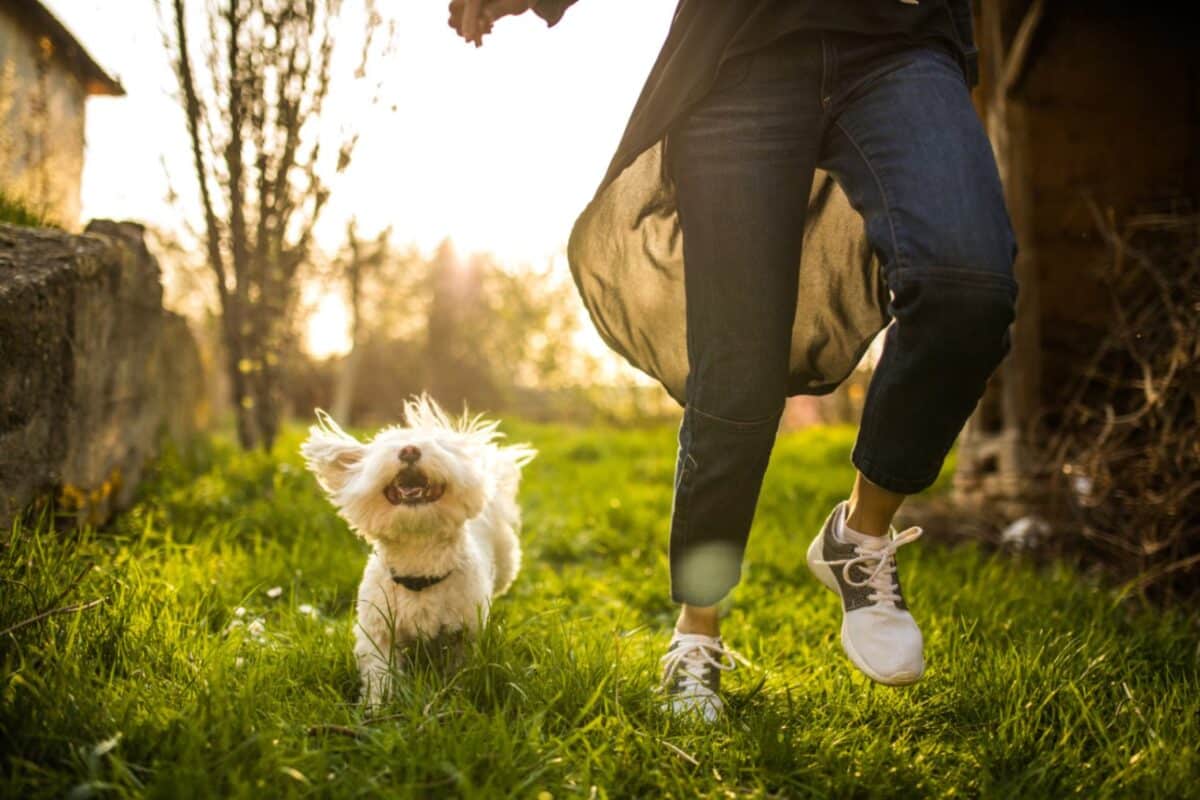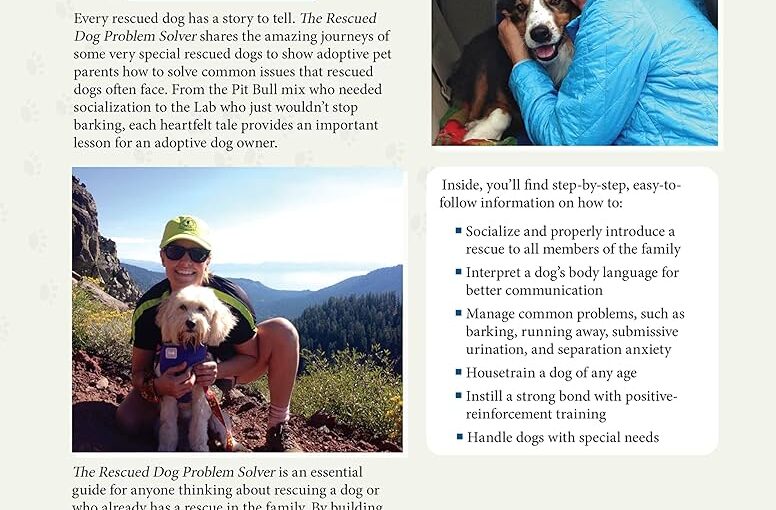To prevent separation anxiety in adopted pets, gradually acclimate them to being alone and create a safe and comfortable environment for them to stay in. It’s important to give them a routine and plenty of physical and mental stimulation to keep them calm and happy.
Adopted pets often come with their own set of emotional baggage, and it’s important to address their anxiety to help them adjust to their new home. By understanding their needs and providing a stable and nurturing environment, pet owners can help their adopted pets feel secure and relaxed.
By taking the necessary steps to prevent separation anxiety, pet owners can ensure that their adopted pets feel safe and comfortable in their new home.

Credit: www.amazon.com
Understanding Separation Anxiety In Adopted Pets
What Is Separation Anxiety?
Separation anxiety is a common behavioral issue experienced by many adopted pets. It’s a distressing condition that occurs when a pet becomes excessively anxious upon being separated from their owners or guardians. This can result in destructive behaviors, excessive barking or howling, and even attempts to escape.
The Impact Of Adoption On Separation Anxiety
Adopted pets often experience a heightened sense of insecurity due to their previous experiences, such as being abandoned or surrendered. This can amplify their susceptibility to separation anxiety. The abrupt change in environment and routine can exacerbate their stress and trigger this behavioral issue.
Preparing Your Home For An Adopted Pet
When preparing your home for an adopted pet, it’s important to create a safe and comfortable environment to help prevent separation anxiety. The process of acclimating a new pet to your home should be gradual, thoughtful, and considerate of the pet’s emotional well-being.
Creating A Safe Space
Creating a designated safe space for your adopted pet can help them feel secure and at ease in their new environment. This space should be quiet, cozy, and equipped with items that provide comfort, such as a soft bed, toys, and familiar scents. Additionally, ensure that the area is easily accessible and free from potential hazards that could cause stress or injury to the pet.
Gradual Introduction To Alone Time
Gradually introducing your adopted pet to spending time alone is crucial in preventing separation anxiety. Start by leaving the pet alone for short periods, gradually increasing the duration as they become more comfortable with being on their own. Implement positive reinforcement techniques, such as providing treats or toys, to create a positive association with alone time. This will help the pet learn that being alone is not a frightening or upsetting experience.
Establishing A Routine
When it comes to preventing separation anxiety in adopted pets, one of the most crucial steps is establishing a routine. Animals thrive on structure and predictability, and having a consistent schedule can help them feel secure and reduce their anxiety when you are away. By creating a routine that includes daily exercise and mental stimulation, as well as a consistent feeding and bathroom schedule, you can provide your furry friend with a sense of stability and improve their overall well-being.
Daily Exercise And Mental Stimulation
Regular exercise and mental stimulation play a vital role in preventing separation anxiety in adopted pets. Dogs, for instance, require physical activities to expend their energy and maintain a healthy body weight. Not only does exercise promote physical fitness, but it also helps stimulate their minds and prevent boredom. So, make sure to take your canine companion for daily walks, play fetch in the park, or engage in interactive games that challenge their cognitive abilities, such as puzzle toys or hide-and-seek.
Similarly, cats also need their daily exercise and mental engagement. Providing opportunities for them to climb, chase, and explore can help satisfy their natural instincts and prevent anxiety. Consider using toys that mimic prey, such as feather teasers or interactive puzzle feeders, to keep your feline friend mentally stimulated and physically active. Additionally, dedicating time each day for play sessions can strengthen the bond between you and your pet.
Consistent Feeding And Bathroom Schedule
In addition to physical exercise, maintaining a consistent feeding and bathroom schedule is equally important when establishing a routine for adopted pets. Regular mealtimes not only provide nourishment but also create structure and predictability for your pet’s day. Try to feed your furry companion at the same times each day, making sure to offer a balanced diet suitable for their age and health needs.
Moreover, establishing a set bathroom schedule is crucial in preventing accidents and reducing anxiety. Dogs, in particular, benefit from a routine bathroom routine, as it helps them develop good habits and reduces the likelihood of anxiety-related accidents while you’re away. Take your dog out for bathroom breaks first thing in the morning, after meals, and before bedtime. By consistently following this schedule, you can help your pet understand the appropriate times and places to relieve themselves.

Credit: www.helpguide.org
Gradual Alone Time Training
Gradual Alone Time Training is a crucial step in preventing separation anxiety in adopted pets. This process involves gradually increasing the amount of time your pet spends alone, helping them build confidence and adapt to being without their human companion. By implementing leaving and returning techniques and desensitizing your pet to departures, you can ease their anxiety and help them feel more secure when you’re away.
Leaving And Returning Techniques
Implementing effective leaving and returning techniques can make a significant difference in preventing separation anxiety in your adopted pet. Here are a few strategies to try:
- Keep your departures and arrivals low-key to avoid triggering anxiety in your pet.
- Ignore attention-seeking behaviors before leaving and upon returning home, as this reinforces their anxiety.
- Establish a regular routine for departures and returns to help your pet feel more secure and predictable.
- Give your pet an engaging activity, such as a puzzle toy or treat dispenser, before you leave to divert their attention and help them associate your departure with something positive.
- Upon your return home, wait for your pet to calm down before giving them attention, helping them learn that calm behavior is rewarded.
Desensitizing Your Pet To Departures
Desensitization is another important aspect of gradual alone time training. By gradually exposing your pet to short periods of separation and gradually increasing the duration over time, you can help them develop resilience and reduce separation anxiety. Here’s how you can desensitize your pet to departures:
- Start with short absences, like leaving them alone for just a few minutes, and gradually increase the time as your pet becomes more comfortable.
- Practice leaving and returning multiple times during a single session to help your pet understand that your departure is not permanent.
- Use positive reinforcement by providing treats or praise when your pet exhibits calm behavior during your brief departures.
- Gradually extend the duration of your absences, paying close attention to your pet’s reactions and adjusting the training accordingly.
Remember, patience and consistency are key when implementing gradual alone time training. By following these leaving and returning techniques and desensitizing your pet to departures, you can help prevent separation anxiety and ensure a happier, more confident life for your beloved adopted pet.
Working With A Professional
Working with a professional can help prevent separation anxiety in adopted pets, ensuring a smooth transition and happier furry companions. The guidance of an expert can provide effective techniques to ease anxiety and create a loving environment for your new pet.
So, consider seeking professional help to support your furry friend’s adjustment.
`finding A Qualified Trainer Or Behaviorist`
` Adopting a pet with separation anxiety can be a challenging experience, and sometimes the best course of action is to seek help from a professional trainer or behaviorist. `` It is important to find a qualified and experienced instructor who specializes in working with adopted pets. They will have the expertise and knowledge to understand the specific needs of your pet and develop a personalized training plan. `
` When searching for a professional, consider the following steps:
`1. Do your research.`` Look for trainers or behaviorists who have experience in dealing with separation anxiety in adopted pets. Read reviews and testimonials from previous clients to get an idea of their success rate. `
`2. Ask for recommendations.`` Reach out to local animal shelters or rescue groups for recommendations. They often work with professionals who specialize in helping adopted pets overcome separation anxiety. `
`3. Schedule a consultation.`` Before committing to a trainer or behaviorist, schedule a consultation to discuss your pet’s specific needs and behaviors. This will give you an opportunity to gauge their understanding of separation anxiety and their proposed approach. `
`implementing Behavior Modification Techniques`
` Once you have found a qualified professional, they will guide you through implementing behavior modification techniques to help your adopted pet overcome separation anxiety. These techniques focus on gradually desensitizing your pet to being alone and building their confidence. `` Here are some common behavior modification techniques that may be recommended:
`1. Desensitization.`` This involves slowly and gradually exposing your pet to situations that trigger their anxiety, starting with short periods of time alone and gradually increasing. They will learn that being alone is not a threat and can gradually build their independence. `
`2. Counterconditioning.`` This technique involves pairing the anxiety-inducing situation with something positive, such as treats or interactive toys. Over time, your pet will associate being alone with positive experiences, reducing their anxiety. `
`3. Environmental management.`` Making changes to your pet’s environment can also help reduce separation anxiety. This may include providing interactive toys, creating a safe and comforting space for your pet, or using calming pheromone sprays. `
` Remember, consistency and patience are key when implementing behavior modification techniques. Working closely with a professional trainer or behaviorist will give you the guidance and support you need to help your adopted pet overcome separation anxiety.

Credit: pupford.com
Frequently Asked Questions Of Preventing Separation Anxiety In Adopted Pets
How Do You Deal With Separation Anxiety From Pets?
To deal with pet separation anxiety, create a routine, use toys for distraction, and provide comfort with a designated spot. Gradually increase time away and seek professional help if needed. Maintain consistency and patience in your approach to ease your pet’s anxiety.
What Is The 3 3 3 Rule When Adopting A Dog?
The 3 3 3 rule when adopting a dog refers to giving a new dog 3 days, 3 weeks, and 3 months to adjust to its new home and family. This allows the dog to settle in and for the owner to understand the dog’s behavior.
How Long Does Separation Anxiety Last In Rescue Dogs?
Separation anxiety in rescue dogs may last for a few weeks to several months. It varies depending on the dog’s background and previous experiences. Providing a calm and secure environment, gradual desensitization to being left alone, and seeking professional help can help alleviate separation anxiety over time.
Can Separation Anxiety In Dogs Be Cured?
Yes, separation anxiety in dogs can be cured through proper training, behavior modification, and the use of medication or natural remedies. Consistency and patience are key in helping dogs overcome separation anxiety and develop a sense of confidence and security when left alone.
Conclusion
Adopting a pet can be a rewarding experience, but it’s essential to address any potential separation anxiety they may have. By understanding their background, providing a secure environment, gradually introducing alone time, and seeking professional help if needed, you can prevent separation anxiety in your adopted pet.
Remember, patience and consistency are key in building their confidence and trust. With time and proper care, your furry friend will thrive and feel secure in their new home.

